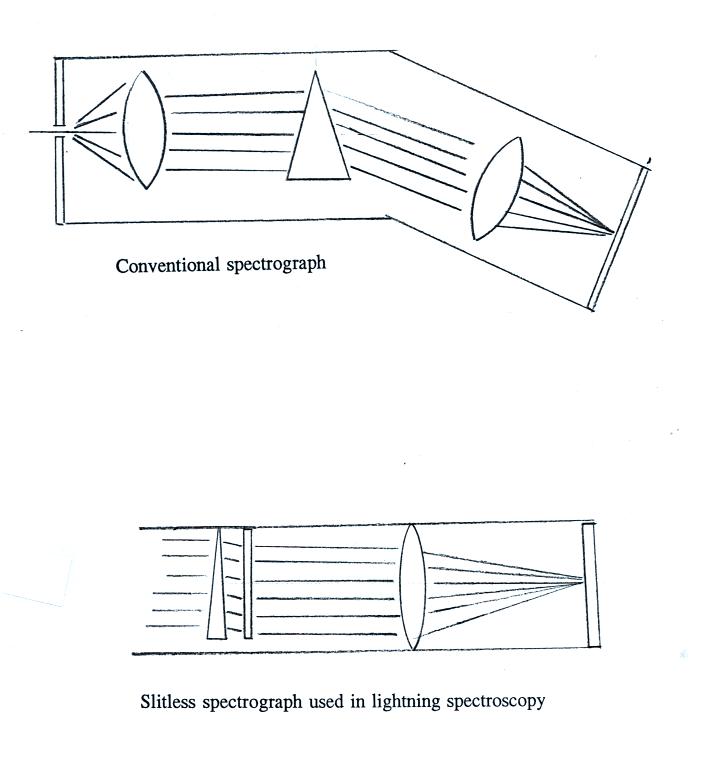
An entrance slit is not needed in the lightning spectrograph
because the lightning channel itself is a narrow light source.
Note the "straight through" design of the lightning spectrograph.
This makes it easier to accurately point the spectrograph at the
lightning.
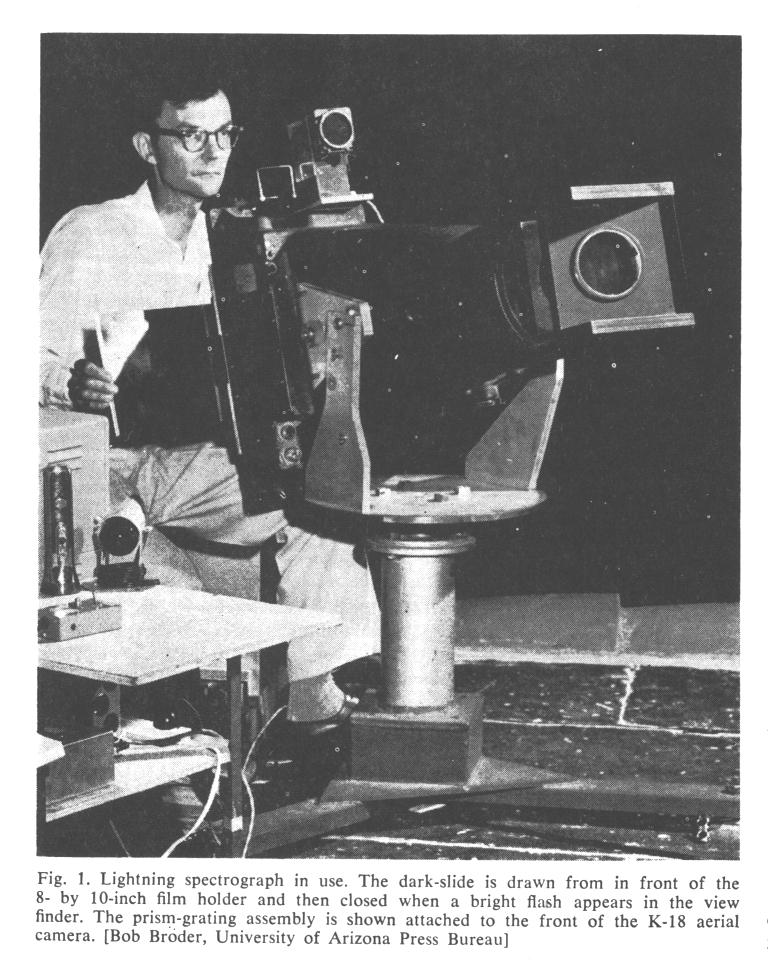
Dr. Leon Salanave (Dr. Krider's MS research advisor) at work one night
on the roof of the PAS Bldg.

Instruments that could be used to obtain slow and fast time resolved
spectra from a segment of the return stroke channel.

An example spectrum covering much of the visible portion of the
spectrum.
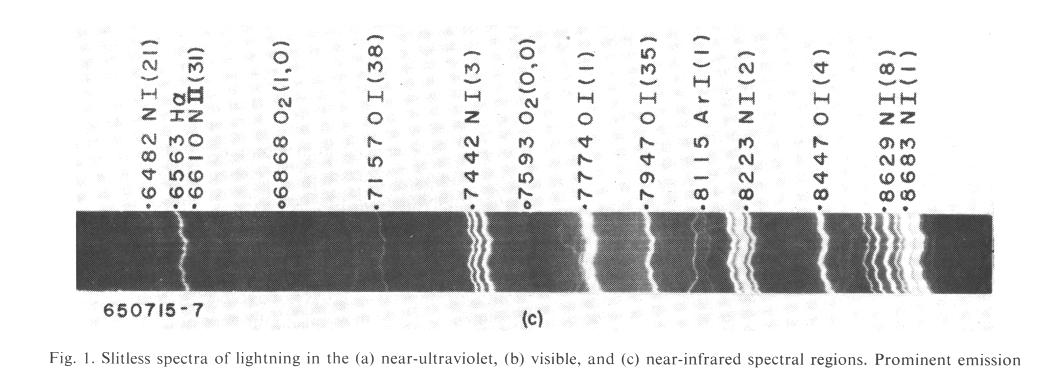
A spectrum extending into the near IR portion of the spectrum.
The bright OI line at 7774 Angstroms is used in the OTD and LIS
satellite systems discussed earlier in the semester.
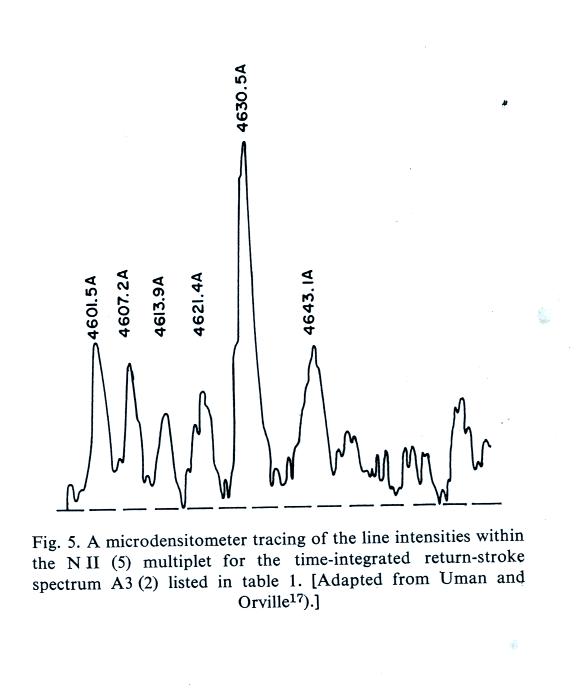
Relative amplitudes of the individual lines in a multiplet group can be
used to determine lightning channel temperatures.
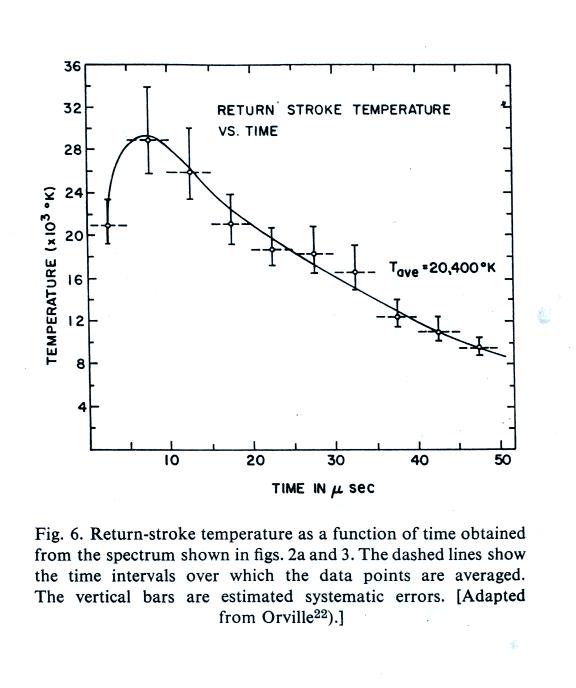
Return stroke channel temperature versus time.

Return stroke channel pressure versus time.
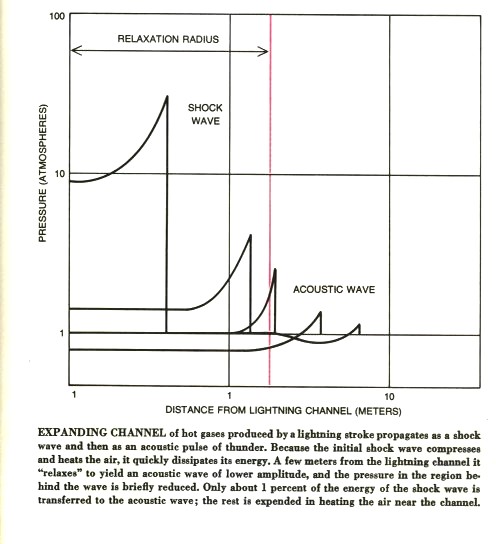
A shock wave propagates outward a meter or so then changes to a sound
wave. Sound propagates at about 340 m/s under normal conditions
at sea level, the shock wave at perhaps 10 times that speed.

The sound that you hear can change dramatically depending on how short
channel segments are oriented relative to you.















